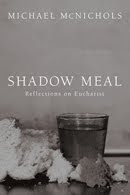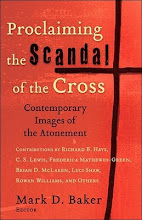
When it was noon, darkness came over the whole land until three in the afternoon. At three o’clock Jesus cried out with a loud voice, “Eloi, Eloi, lema sabachthani?” which means, “My God, my God, why have you forsaken me?” When some of the bystanders heard it, they said, “Listen, he is calling for Elijah.” And someone ran, filled a sponge with sour wine, put it on a stick, and gave it to him to drink, saying, “Wait, let us see whether Elijah will come to take him down.” Then Jesus gave a loud cry and breathed his last. (Mark 15:33-37)
Dying has to be the loneliest of all human experiences. Even when others are gathered around the one dying, the process is singular and cannot truly be shared. Death is a solitary business.
A lot of people were gathered around Jesus as he approached death. Even though he died with two others, each death was individual. Jesus suffered his death by himself.
There is a common theological understanding of this isolation in death that says that even God abandoned Jesus to die alone with the sins of the world. The conclusion is that such abandonment was a theological necessity, evidenced by Jesus’ agonized lament, “My God, my God, why have you forsaken me?”
Any Bible footnote will tell you that he was quoting from Psalm 22, which goes on to speak of danger and physical suffering, even suffering that sounds eerily akin to a body undergoing crucifixion.
But this cry from the Psalm is more that just the cry of one feeling abandoned and alone. It is the cry of Israel. It is the cry of the world. It is a cry that looks around at evil, suffering, pain, exile, and death, and despairs that there is no rescue. It is a cry that fears that God has left the building.
Has God abandoned Jesus to carry the weight of the world all by himself? Or, is Jesus crying out on behalf of Israel and all of the world, identifying himself with universal suffering, and taking that pain to his heavenly Father who, rather than abandoning Jesus, is experiencing the fullness of his pain within God’s self?
And when Jesus breathes his last, does God exhale too?















































